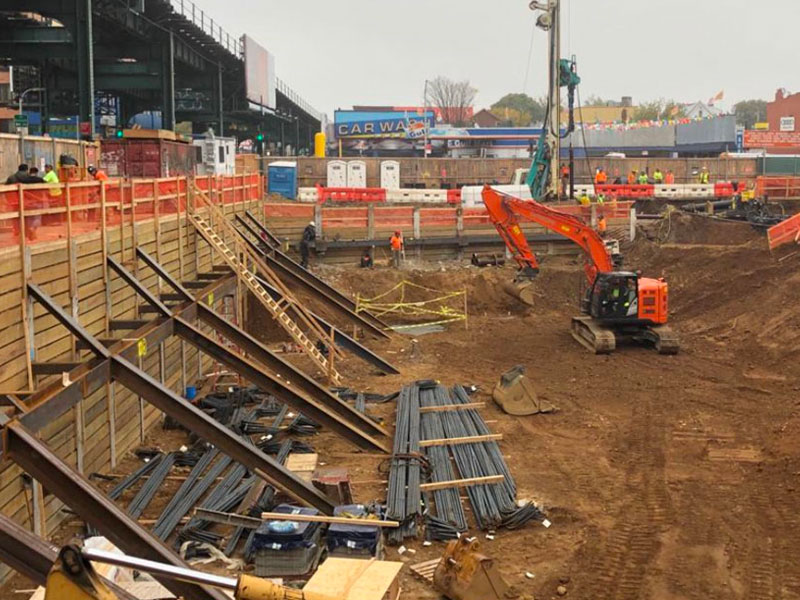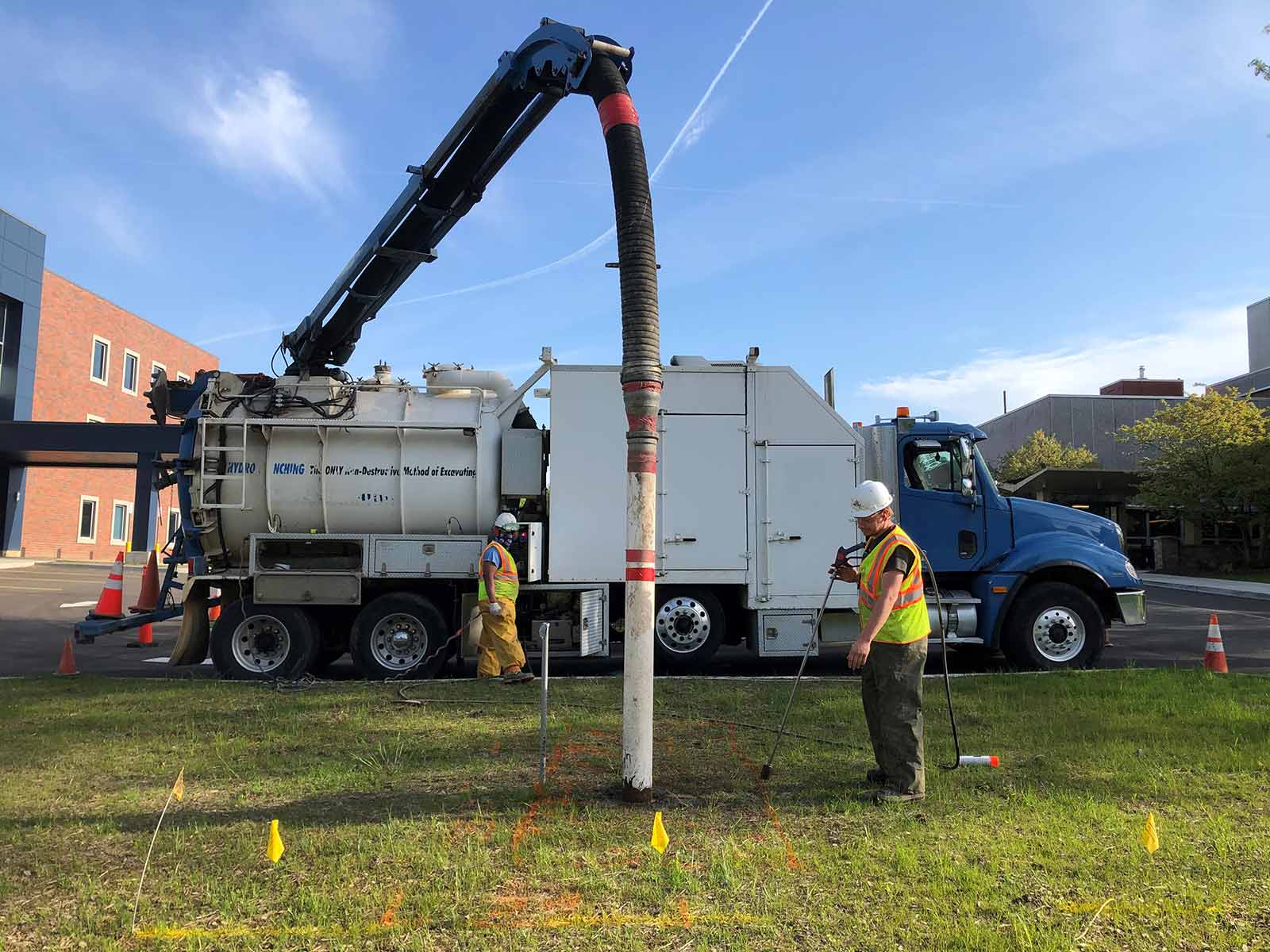Lancaster Trenching - Expert Trenching Solutions in Lancaster, Ohio
Lancaster Trenching - Expert Trenching Solutions in Lancaster, Ohio
Blog Article
Comprehensive Excavation Strategies: Grasping the Fundamentals for Success
In the world of building and civil design, the importance of efficient excavation strategies can not be overstated. The cautious preparation, accurate implementation, and meticulous interest to information called for in excavation projects require a comprehensive method that encompasses different fundamental facets. From first soil evaluation to the implementation of safety and security steps and routine progression surveillance, mastering these core aspects is necessary for achieving success in any excavation endeavor. The true mastery exists not merely in comprehending these basics yet in seamlessly integrating them to navigate the complexities of excavation jobs with skill.
Comprehending Excavation Job Preparation

The first stage of any type of excavation project is the planning phase, where crucial decisions are made that can substantially influence the outcome of the task. Comprehending the task timeline, budget plan, and extent restrictions is critical for producing an extensive excavation strategy that makes sure the project's success.
One key facet of excavation task planning is the advancement of an in-depth timeline that lays out the series of milestones, deadlines, and tasks. This timeline works as a roadmap for the task group, permitting them to track development and make needed modifications to make sure the project stays on timetable. Furthermore, a well-defined budget that makes up all expenditures, consisting of equipment rental, labor costs, and products, is essential for staying clear of price overruns and hold-ups. By meticulously taking into consideration all these variables throughout the preparation phase, excavation jobs can be performed efficiently and properly, causing successful outcomes.
Dirt Analysis and Site Analysis
Conducting complete dirt analysis and site evaluation is a critical action in the prep work stage of any excavation job. Dirt evaluation entails identifying the structure, framework, and residential or commercial properties of the dirt at the excavation website. This details is essential for comprehending the dirt's bearing capacity, moisture material, and capacity for disintegration, which are crucial consider identifying the excavation techniques and tools required for the task.
Website evaluation exceeds soil analysis and includes a wider evaluation of the total website conditions. This evaluation includes determining any type of prospective threats, such as below ground energies, ecological concerns, or unsteady terrain, that might affect the excavation procedure. By completely examining the site, project managers can develop effective excavation techniques that prioritize security, effectiveness, and ecological security.
Utilizing sophisticated innovations like ground-penetrating radar, dirt tasting, and drone studies can improve the accuracy and performance of dirt evaluation and site evaluation. Spending time and sources in these preliminary steps can inevitably conserve time and avoid costly hold-ups or difficulties throughout the excavation process.
Equipment Option and Application
Effective excavation projects count greatly on calculated equipment selection and utilization to ensure ideal performance and productivity. Choosing the appropriate tools for the work is vital in maximizing efficiency and minimizing downtime. Factors such as the sort of soil, deepness of excavation, and task scope play a significant duty in figuring out the most appropriate equipment for the job at hand.

Along with picking the ideal equipment, correct usage is crucial to job success. Home Page Operators needs to be educated to take care of the tools safely and successfully - lancaster trenching. Routine maintenance checks and timely repair services assist stop malfunctions and make sure constant efficiency throughout the job
Security Steps and Laws Compliance
In the realm of excavation projects, prioritizing precaution and compliance with regulations is paramount to guaranteeing a safe and lawfully audio functional setting. Precaution encompass a variety of techniques, consisting of performing thorough website evaluations, executing appropriate signs and obstacles, and offering sufficient safety and security training for all personnel associated with the excavation process. Adherence to policies, such as OSHA demands in the United States, guarantees that the excavation task fulfills the essential requirements to protect workers, spectators, and the surrounding setting.

Monitoring Progress and Adjusting Strategies
Exactly how can forecast managers effectively track the development of excavation jobs and adjust their methods appropriately to enhance results? Surveillance development is crucial for making sure that excavation jobs stay on track and meet target dates. Task managers can make use of various tools and strategies to track progress, such as daily report card, normal site inspections, and progressed monitoring innovations like drones and GPS tracking systems. By constantly keeping an eye on the project's improvement, managers can determine any prospective hold-ups or problems beforehand and take positive actions to address them.

Verdict
In verdict, understanding the basics of extensive excavation strategies is essential for the success of any kind of job. By comprehending project preparation, examining soil and website problems, picking proper tools, adhering to safety regulations, and keeping track of progress, project managers can make sure a smooth and effective excavation procedure. Carrying out these methods click site will result in successful results and minimize possible risks or setbacks throughout the excavation job.
The initial phase of any kind of excavation job is the preparation stage, where critical choices are made that can substantially affect the end result of the job. Understanding the job extent, budget plan, and timeline restrictions is critical for creating an extensive excavation strategy that makes certain the project's success.
How can forecast supervisors properly track the development of excavation jobs and adjust their strategies accordingly to optimize results? By carefully checking progress and being willing to adapt methods, task supervisors can enhance the overall success of excavation projects.
By comprehending job planning, evaluating soil and website problems, selecting proper tools, complying with safety and security policies, and keeping an eye on progression, project supervisors can make sure a smooth and effective excavation procedure.
Report this page